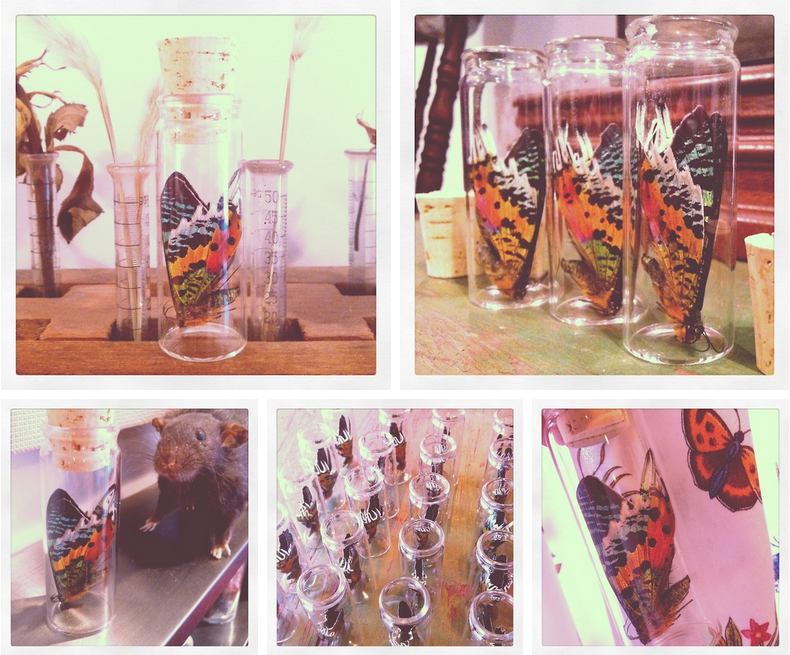
One of the great things about the digital music revolutions is that it opened the doors for indie musicians to cheaply and effectively distribute their music to a wide audience, without having to invest in physical CDs and records. And yet, many have felt that the digital revolution has deprived albums of their
visual and tactile components and depersonalized the experience of music ownership.
This might have been true in the earliest days of digital consumption, but now, with services like Bandcamp and Topspin (and many others), the digital music revolution is breathing new life into the possibility of creating meaningful, unique, collectible, and cost-effective album artwork.
Everyone has come to understand that the digital music revolution liberated music from its physical delivery medium, far fewer musicians have grasped that it has also liberated the physical album artwork from its musical delivery medium. Seemingly by happenstance, the digital music revolution has spawned a parallel and equally-profound revolution: a revolutionary paradigm-shift of what constitutes “album artwork.”
The rules have changed completely. As artists and labels we no longer have to submit to the anachronistic notion that “album art” constitutes an image printed onto a 12 cm or a 12 inch square piece of cardstock, just to suit the retail store specifications of a near-obsolete music formats.
With much of our music being delivered as pure data, our artwork can now be anything we want it to be.
Say for example you’re a goth or industrial band and you were considering a picture of a cross as your album artwork. Instead of a CD with a cross on the cover, your artwork could be small wooden or iron crosses sent to fans who purchased the album. Or if past album artwork used a creative photo of your band as its cover, you could now take 250 Polaroid photos and use those as your album artwork–each photo unique, signed, and wonderfully personal.
Now, it’s easy to confuse this paradigm shift with “creative merchandise.” But merchandise has always been understood as “something in addition to” (i.e. set apart from) those components that make up an album or collection of music. I’m not talking about offering a coffee mug, t-shirt, or tote bag that happens also to come with a random album. What I’m talking about is creating a unique, physical art-object that is bound in perpetuity in meaning and intention to a specific album. These art-objects are no more “merchandise” than traditional jewel cases that are missing their CDs would be considered merchandise.
This is more than a mere linguistic shift, it’s a conceptual revolution of our notion of what constitutes “album art”. What’s more, it’s an economic game-changer for DIY artists and labels.
One of the big hurdles indie artists have to overcome with CDs and vinyl releases are the high manufacturing costs and stiff competition in pricing. The perceived “fair market value” of CDs and vinyl records are largely determined by the big commercial players (i.e. the big indie labels and majors), who’s unit manufacturing costs is a lot lower than DIY releases with runs of 1000 or less. An Arcade Fire CD is going to be printed a million times, so the unit cost is well under a dollar, which makes a price point of $10.99 feasible. The problem is that their price point shapes world-wide consumer expectation and affects the entire music marketplace, including those artists that only print 100 CDs.
As we all know, the first reasonable price point with CDs tends to be a 1000 units. When you’re a new band, that’s a lot of CDs, and it requires a major financial investment. The only feasible option under a 1000 units is to go with 100 CD-R’s, which are less durable, of comparatively poor print quality on the disc/packaging, and more expensive per unit. It’s no wonder indie artist struggle when they’re spending $3 to $4 dollars per unit (not counting recording costs and gear), have to sell their CDs for $10, and still find themselves overcommitted to hundreds and thousands of unsold CDs.
By comparison, my label, Stars and Letters, just re-released GPSYMTH’s debut album, “Ripostes”, with two bonus remixes, and placed dried sunset moths from Madagascar into 1.25oz glass vials, handwriting each download code onto a card, and attaching the card with a string and a wax seal. Total unit cost? About $3 dollars. At only 25 units.
It’s too expensive for huge labels to make every release special and unique.
With tools like Bandcamp and Topspin (or even Etsy), we can create custom, physical album artwork that is striking, desirable, and cost-effective, and wed it permanently to any collection of music we choose. Want to release custom, neon-spray-painted alphabet blocks as your album artwork? We’re going to do it. $.99 cents per block at Target and a can of spray paint. Done. The possibilities are as limitless as your imagination.
To me this is exciting and progressive and beautiful. What’s more, it’s a paradigm shift that has the potential of forever changing the way artists conceive of their album artwork.
Props to Music Think Tank

